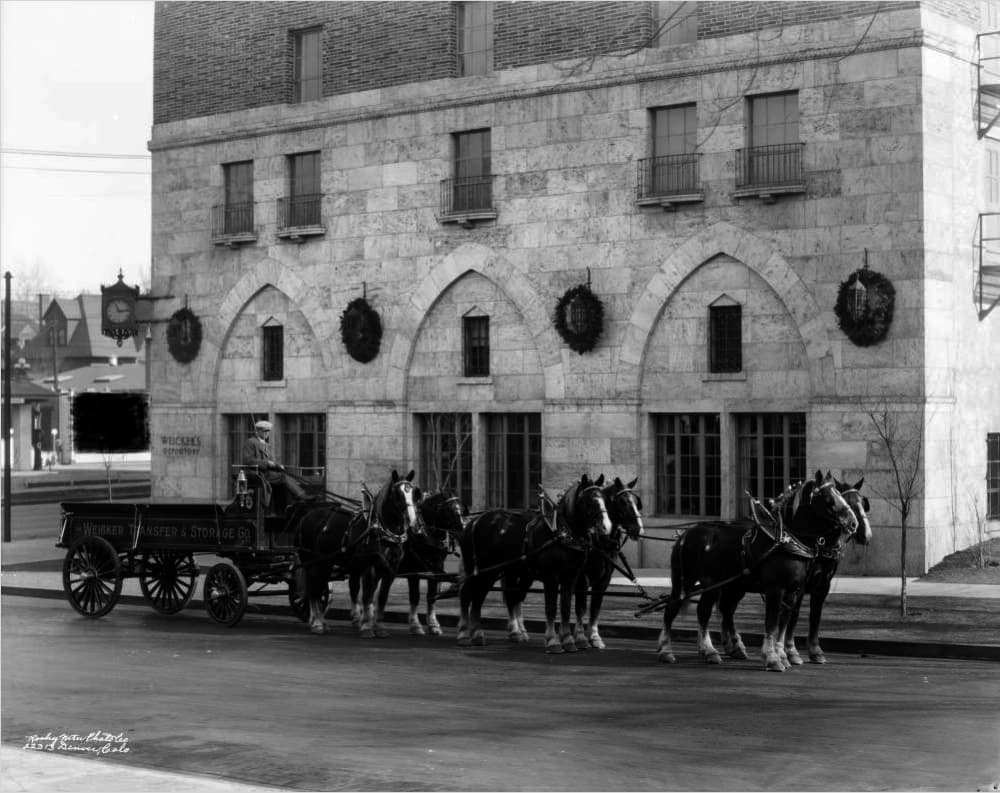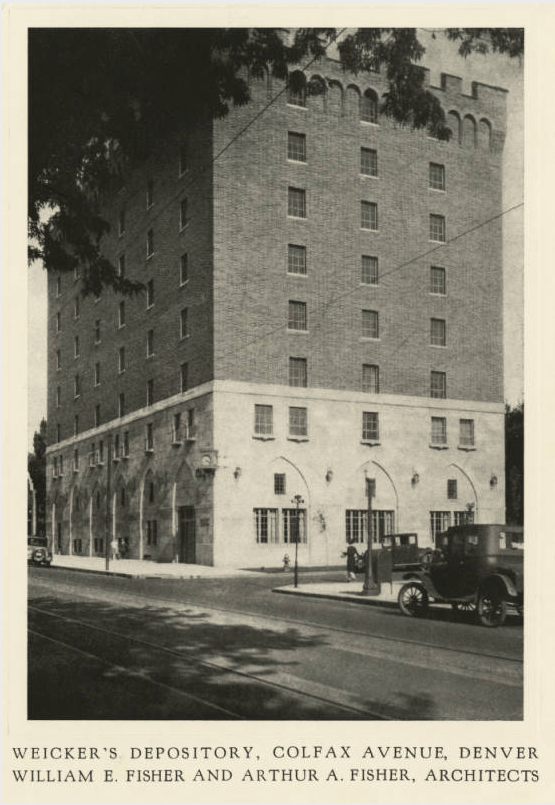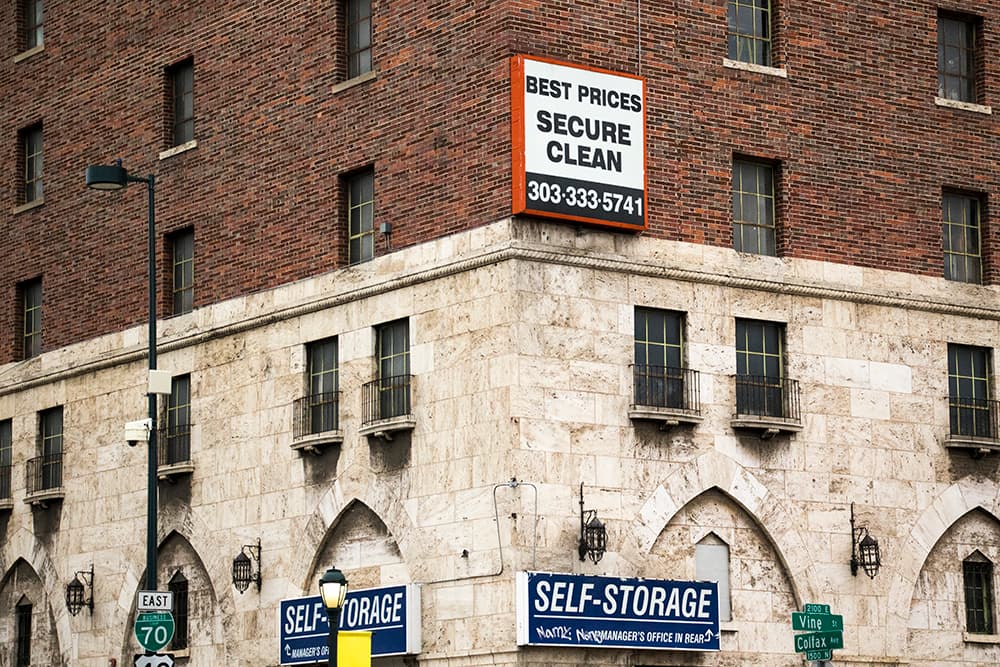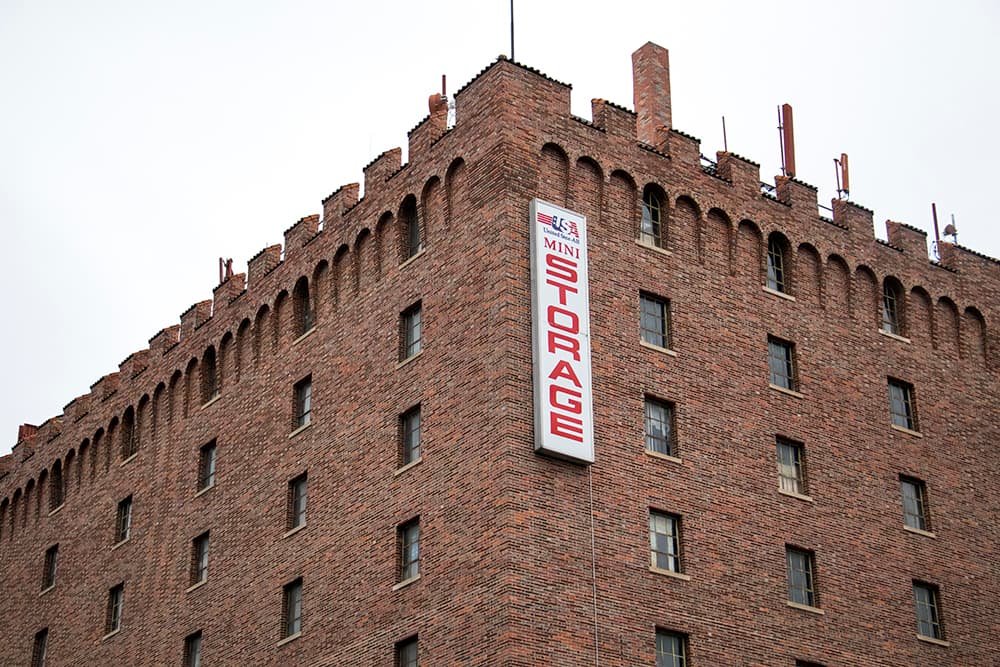
Nearly a century ago, builders marked a pivotal moment in Capitol Hill's history when they erected the ornate brick-and-limestone tower that looms over East Colfax Avenue and Vine Street.
At the time the tower was built, new residents were flocking to the greater Capitol Hill area. Unlike their predecessors who could afford Victorian homes and mansions, the newcomers rented smaller apartments and boarding houses.
The shift in living styles meant many of the new residents needed extra space somewhere to put their furs, carpets and other household goods, paving the way for the Weicker Depository — sometimes known colloquially as the storage castle — to be built in 1926.
And despite offers to sell and changes along the corridor, the building's current owners say they see the site continuing to serve as storage for the new generation of Cap Hill residents.

The Weicker Transfer and Storage Co. paid for the depository to be built at 2100 E. Colfax Ave. at a time when local deliveries were still made by horse-drawn carriages. The site itself was surrounded by late-1800s Victorian homes, including one to the south designed by William A. Lang.
Residents were not happy with the idea of a new, urban neighbor.
Denver City Council initially denied Weicker's application for a building permit. The officials were "apparently persuaded by arguments that the proposed building was incompatible in terms of size and height with its surroundings and would be 'a nuisance to the skyline,'" according to an application to have the building added to the National Register of Historic Places.
"Opponents also argued that the building would become rat-infested and attract children, with 'a detrimental result to the morals of the community,'" the application states.
Weicker appealed the Denver decision, and the case eventually went all the way to Colorado Supreme Court, where the justices sided with the storage company and allowed building to begin.
Weicker enlisted professionals to make its storage tower fit in with the surrounding neighborhood. The renowned Fisher & Fisher architectural firm — responsible for many prominent buildings downtown — was tasked with designing the structure. The firm is believed to have styled the eight-story tower after city halls found in the Italian towns of Florence and Sienna.

The goal of Weicker Depository seemed to be "preventing anyone or anything from corrupting the integrity" of the Wyman Historic District, according to Denver historian Phil Goodstein.
"The castle features travertine marble (and) stands out as a landmark denoting the transformation of Wyman District from an area of mansions to one filled with rooming houses and apartments," Goodstein wrote in "The Ghosts of Denver: Capitol Hill."

The Weicker family sold their depository to Arthur "Buzz" Victor and Keith Shwayder for $385,000 in 1976. The new ownership group, going by Minibrook Partnership, partitioned the building into 570 personal storage units, according to a Denver Post article on the sale.
Victor told the Post at the time that "with the decline in both size and number of houses and apartments building during the last two years ... external space has become an increasingly necessary item for tenants of these units."
Denver developers see the same opportunity in storage space today as they did nearly a century ago, due in part to the hundreds of people moving each month into homes where space is limited.
"The building usage today is the same as when it was originally built: storage. Perhaps that says that as times change the need for storage remains," said Barry Bender, a partner with United Stor-All.

Bender said that today the Weicker Depository, now flanked by a fast food restaurant and historic Victorian home, has 636 units and serves a mix of businesses and individuals.
"There are a number of developers that have our property on their radar screen. We have had discussions with interested parties going back at least 15 years," Bender said. "We expect to continue operating our self-storage business for the foreseeable future."
Subscribe to Denverite’s newsletter here.
Business & data reporter Adrian D. Garcia can be reached via email at [email protected] or twitter.com/adriandgarcia.













